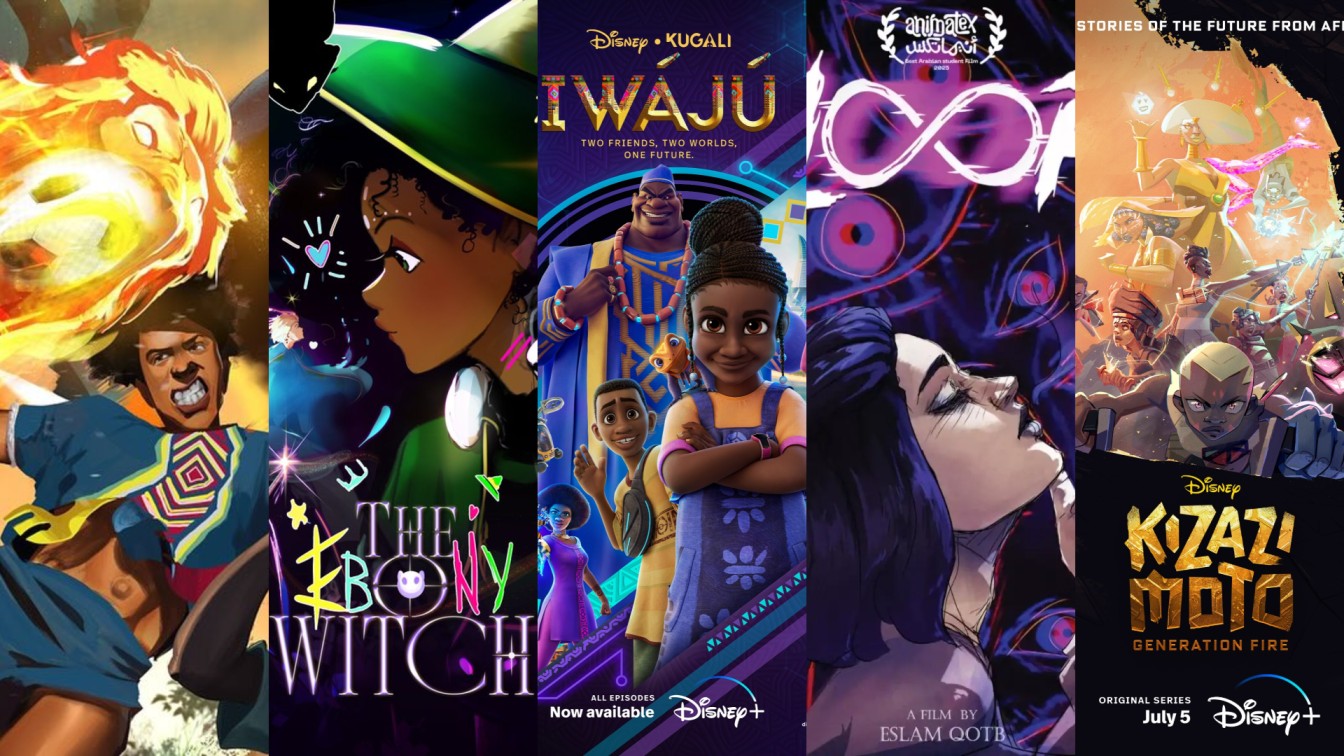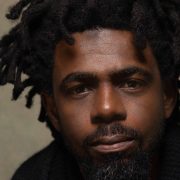Experiences vary across the continent, but the perspectives of these animators and filmmakers provide valuable insight into the rise, limitations, and possibilities of African animation.
By Vivian Nneka Nwajiaku
In July 2022, when HBO and Cartoon Network announced Iyanu, their adaptation of Roye Okupe and YouNeek Studios’ Nigerian graphic fantasy novel series, I wrote an Afrocritik essay on Nigeria’s animation Industry and the Nigerian factor, interrogating the conditions that limit the industry’s ability to grow as fast as it should.
In the year that followed, international investments seemed to explode. Disney+ announced Kizazi Moto: Generation Fire, a pan-African animated anthology short film series produced by South Africa’s Triggerfish Animation Studios, with entries from South Africa, Zimbabwe, Nigeria, Kenya, Egypt, and Uganda. Netflix announced Supa Team 4, an animated series also produced by Triggerfish, created by Zambian writer Malenga Mulendema, and set in a futuristic Zambia.
Cartoon Network premiered Garbage Boy and Trash Can, created by Nigerian animator, Ridwan Moshood, and the Network’s first superhero animated comedy series to be produced in Africa. And Showmax aired Jay Jay: The Chosen One, inspired by the acclaimed Nigerian football star, Jay Jay Okocha.
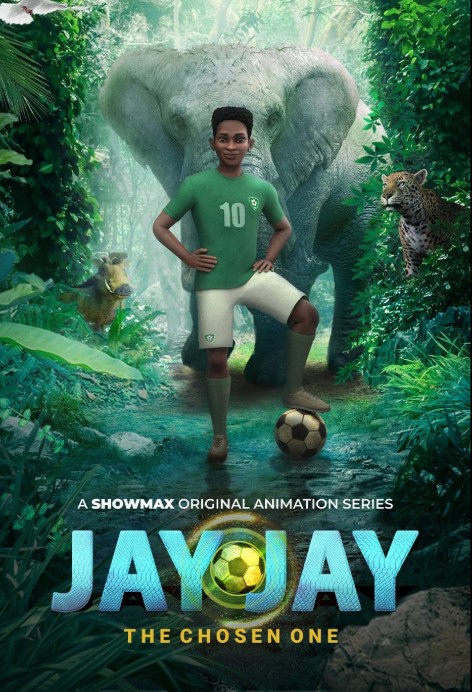
In a follow-up, Afrocritik published an essay in July 2023 where culture writer, Sybil Fekurumoh, declared that African animations are becoming a new, exciting frontier for African Storytelling. “The successes of animators extend beyond the global stage; these creators are also garnering well-deserved recognition as film creators within their own local communities,” Fekurumoh noted.
Three years down the line, the African animation industry has recorded critical success and steady economic growth, with the African animation market growing from a value of $12.3 billion in 2022 to $14.52 billion in 2024 and a projected $15.71 billion this 2025.
To capture the current state of African animation, understand the motivations behind these investments in African animations, obtain clarity on the challenges faced by the continent’s industry as well as potential solutions, and consider the potentials for the future, Afrocritik reached out to several African animators, both established studios and emerging talents, focusing on a country each from Southern Africa, West Africa, East Africa, and North Africa.
Experiences vary across the continent, but the perspectives of these animators and filmmakers provide valuable insight into the rise, limitations, and possibilities of African animation—revealing an industry in desperate need of intervention, yet defined by resilience, imagination, and creators determined to establish animation as a vital part of African storytelling.
Where Does African Animation Currently Stand?
As of today, the earlier announced projects have borne fruit. The first season of Iyanu has aired, with the series renewed for a second season, one feature spin-off released, and another announced. Supa Team 4 has two seasons streaming. Disney’s Kizazi Moto and Iwájú (a Lagos-set limited series produced by Kugali Media, a UK-based pan-African studio, and announced in 2020) have earned accolades at both the Annie Awards and the Emmys.
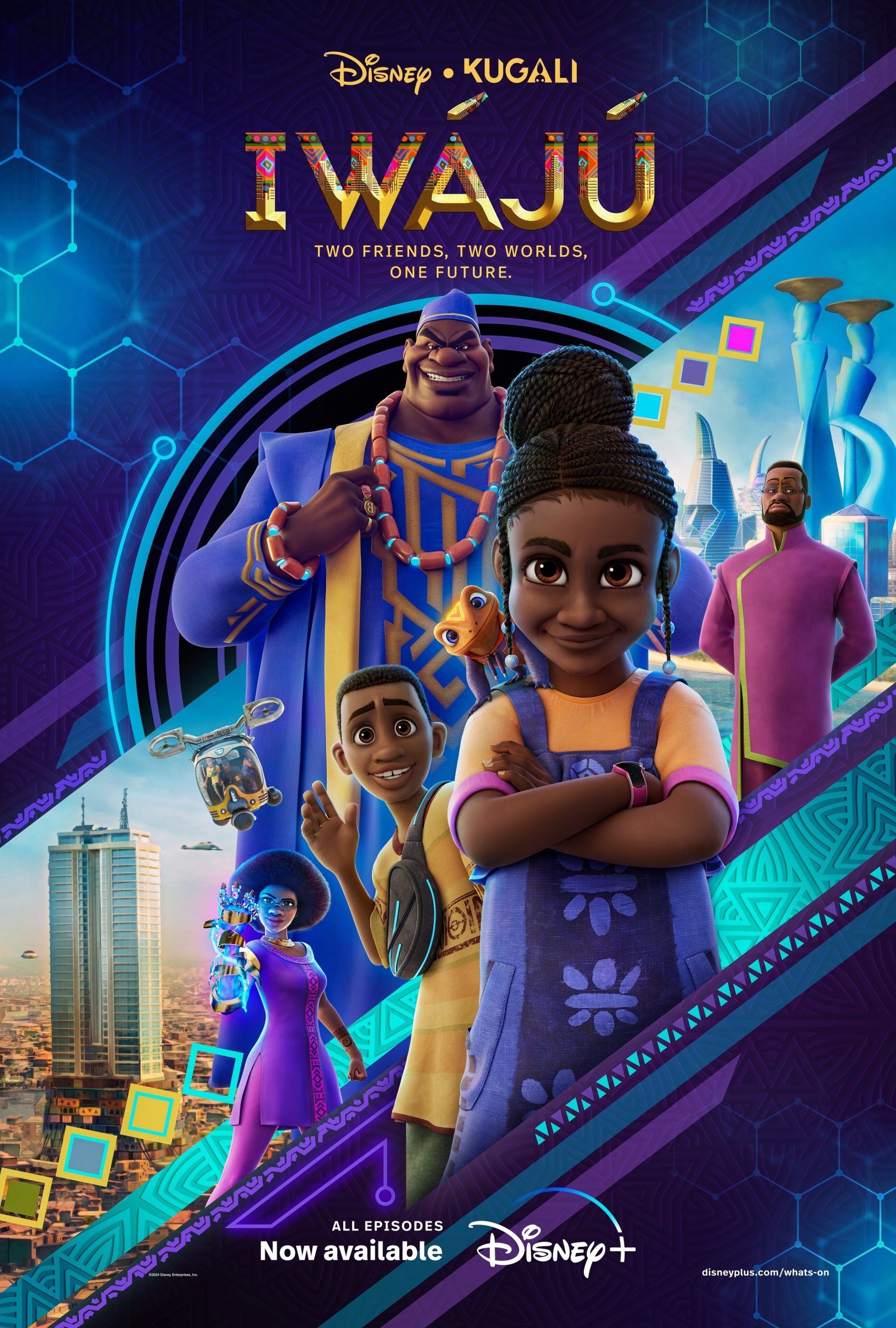
African animators are now more represented on the most important film spaces on the international scene, from broader film festivals like the Berlin International Film Festival, to specialised festivals like Annecy International Animation Film Festival. And African animators, both emerging and established, are increasingly inspired to create more and bolder work.
As Stuart Forrest, the CEO of South Africa’s Triggerfish Animation Studios, arguably the most influential animation studio in Africa, tells Afrocritik, “African animation is in an exciting place. We’re seeing quality jumps from many African studios that are the result of a passionate industry embracing new tools that are enabling higher quality output.”
Similarly, Malak Khaled, an Egyptian independent animator, says, “We’re beginning to see more original animated content emerging from Africa and the MENA region, which is refreshing given that most consumed animation has come from the West. It’s gradually being recognised here as a powerful storytelling tool, not just something ‘for children’. There’s still a long way to go, but we’re definitely moving forward step by step.”
Somto Ajuluchukwu, founder of Nigeria’s Vortex Corp, describes animation as “no longer just a side experiment,” particularly in Nigeria. “It’s becoming a voice of its own within our filmmaking culture. We are beginning to believe in the power of our own stories in this medium,” he adds.
Racheal Afor, a young Nigerian animator, agrees. “The creatives behind the scenes are deeply committed to building a robust animation ecosystem on the continent. Across Africa, there’s a rising wave of talent, passion, and storytelling innovation.” But she acknowledges that in Nigeria, animation still does not receive the same level of attention or backing as Nollywood films. “Animation has not reached that level yet—not because the talent is not there, but because the support is not.”
This sentiment is echoed by Tolu Olowofoyeku, Co-founder of Kugali Media, who says frankly that, outside of people in the animation industry, most Africans don’t even know that African animation exists yet. “I’ve been in this field for ten years, and most of the time, when I meet someone and tell them about what I do, I get responses like, ‘I didn’t know that we made comics in Nigeria, I didn’t know we made animation in Africa.
“If I ask them whether they’ve seen African animations from the other companies outside of Kugali, and I mention shows on Netflix or Showmax, they’ve never heard of these shows. They don’t know these shows exist. So, the industry is really in its infancy,” he says.
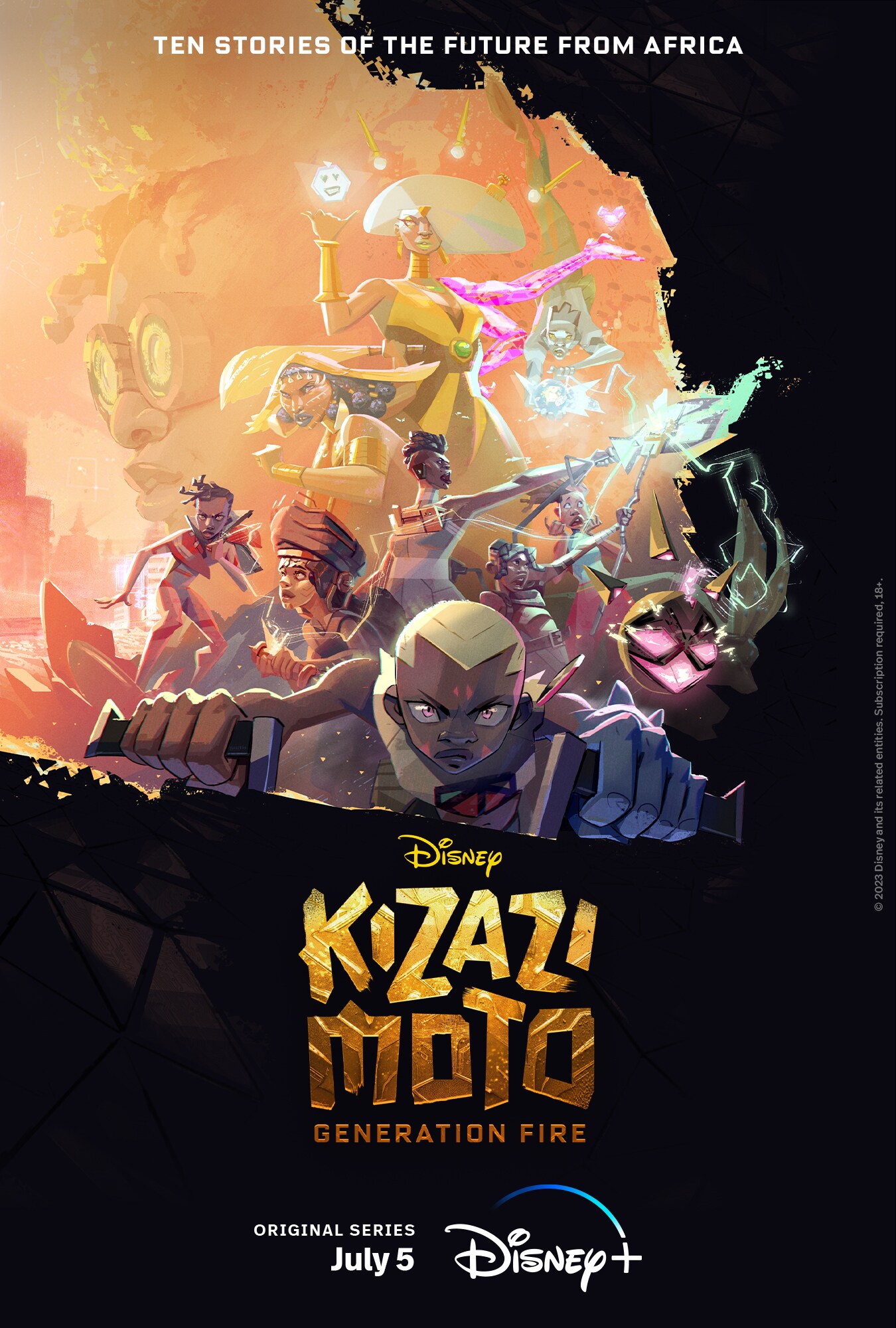
Truly, African animators are not in denial. There is a shared understanding that the industry still has a long way to go. “The industry is rising, more artists are eager to tell their own stories, but it feels like we are still learning to walk. A positive shift has come with initiatives like Disney and Triggerfish’s Kizazi Moto anthology, which brought African studios into the global spotlight and empowered them. That said, while this is a step forward, the shift is still small compared to the potential of the region,” admits Abdulrahman Khedr, CEO of Giraffics, an Annecy-winning Egyptian studio and a respected name in Middle Eastern and North African animation, with two episode credits on Kizazi Moto.
In the same vein, Eslam Qotb, whose animated short, Loop, won the ASIFA (International Animated Film Association) Special Prize at the 2025 edition of ANIMATEX, Egypt’s largest annual animation event, says, “There are many talented creators whose works have reached important international festivals, but locally, the industry is still underdeveloped. Even though we have some amazing studios, most of their work is outsourced for foreign markets.”
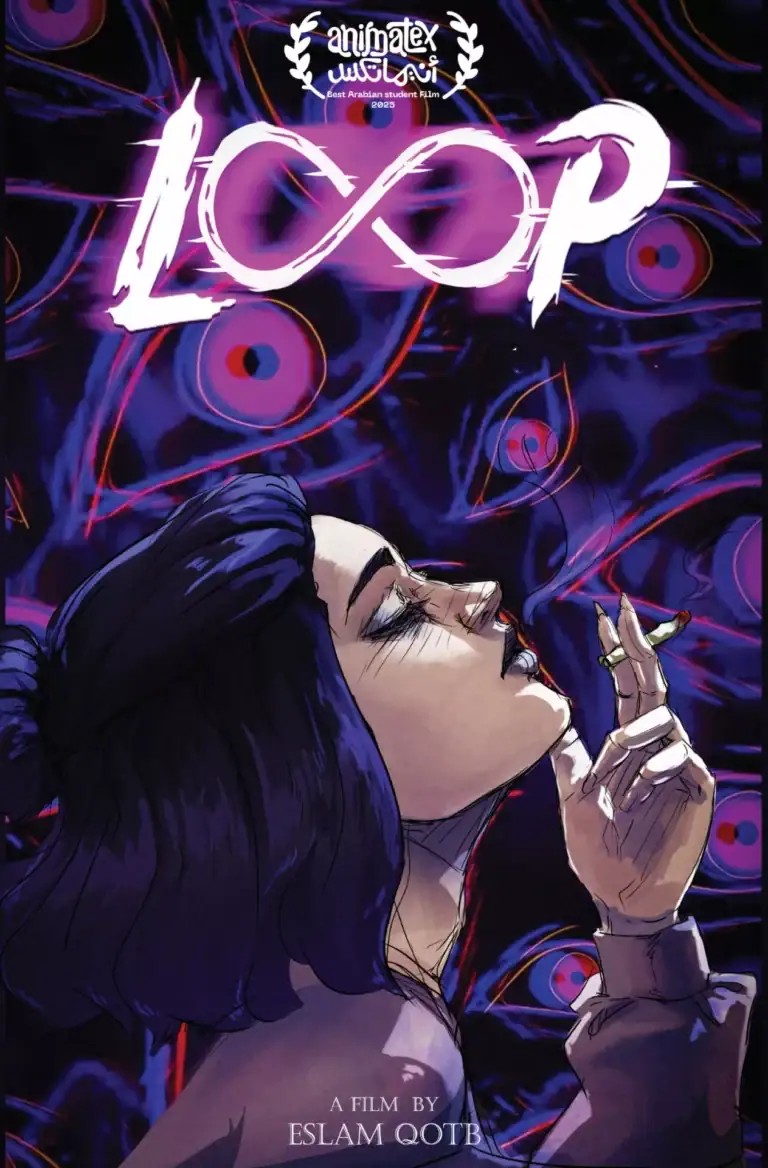
But it is essential to remember that African animation has a long history and did not just come into existence with the advent of international investors. In the words of Ng’endo Mukii, a Kenyan writer, director, mixed-media artist with a documentary animation background, founder of Ng’endo Studios, and the force behind Enkai (the episode that won Kizazi Moto its Annie Award for Best Limited Series Animated Television/Media Production): “I would not say that African animation is still in its early stages, but rather that we are lacking continuity between generations of animators.
“There is definitely North African Animation that I’ve seen that was created in the 60s, including intricate thread-embroidered frame-by-frame animation that was shot under the camera. William Kentridge in South Africa has been animating for decades. And I’ve seen a number of short, animated films from different African countries, Congo, Tanzania, Kenya, Uganda, and Nigeria.
“It’s important for us to contextualise the space in which we’re working. There have been generations of African animators in different parts of the continent, but we’re disconnected from each other, and within our countries, we’re not creating systems that allow us to really weave, intentionally, a thread between one generation and the rest and create generational information that we hand down to each other at each stage.”
She adds, “When you look at all these series, Uli and Tata’s African Nursery Rhymes, Kizazi Moto, Iyanu, look at the quality of the work that is being made; this is not the beginning. These are people who’ve been in the industry and figuring out their practice for decades.” For Mukii, “What is happening now is that people are investing in the continent and in African creativity in a different way, which is making us more visible.”
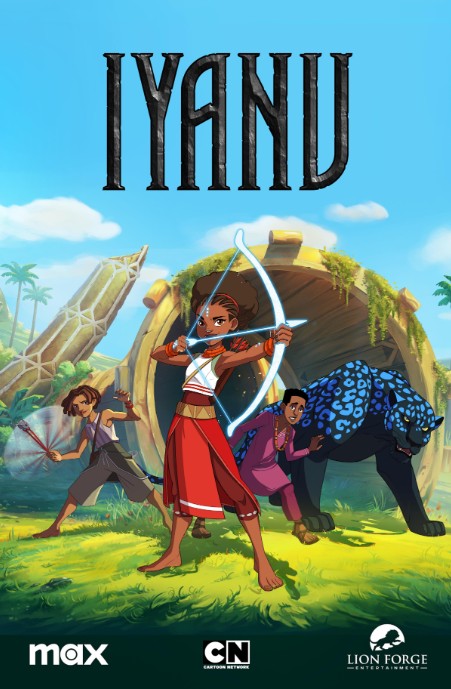
Mukii, herself, has been experimenting with mixed media animation for over ten years, a background that resulted in the uniqueness of Enkai, where she mixed 3D animation, 2D animation, and stop motion. “It’s because of those ten years of experimenting that they could trust me to play with all these mediums and still make something that was cohesive.”
It is the same story for Triggerfish. Although the studio benefited from being set up in a time when the South African government was investing in animation, and has had the opportunity to work with respected names like Sesame Workshop, Disney, Netflix, Magic Light Pictures, and Hasbro, they have literally spent decades building their portfolio. “Each project builds skills, reputation, and leads to the next project,” Forrest reflects. “We’ve been going for 30 years, so small, consistent incremental steps pay off over time.”
What Is Driving the Investments in African Animation?
The question then arises: why now? What is fuelling the growing interest in African animation? Forrest traces the development to the pre-2022 streaming wars, when streamers were focused on growth and recognised that while 18% of the world is of African descent, there was very little on their platforms that represented this demographic.
“The success of Black Panther in 2018 led to increased interest in African aesthetics and storytelling, and dispelled the long-held belief that a black cast wouldn’t play in the mainstream cinemas to mixed audiences. But the biggest driver is a new generation of resourceful young creatives from Africa who have storytelling talent and ambition, and access to tools to begin to visualise these ambitions,” he explains.
“It’s a convergence of timing and authenticity,” Ajuluchukwu posits. “The world has consumed stories from everywhere else and is now turning to Africa for fresh mythologies and perspectives. At the same time, African creators are ready. We have the courage and skill to tell our stories unapologetically. Studios like Disney or HBO see that these narratives are not just regional—they are universal in their humanity. That hunger for authenticity, paired with the world’s curiosity, is fuelling this moment.”
Olowofoyeku has a different perspective, situated in the broader context of the international animation industry. “If we look at the last ten years, I don’t think you can list up to twelve African animated projects that have been funded by American studios like the ones mentioned. How does that compare with the output of these American studios? Across all the major international animation studios, we can count a few thousand animated projects over the last 10 years. Out of these thousands, we have probably just eight projects that are African. That is less than 0.05%. This shows you that it’s just a drop in the ocean.
“So, I don’t think that there has been increased investment in African animation. I think that there has been a small, tiny little bit of investment by international studios in African animation, and that is because the African animation industry exists now. It did not exist before, so there was nothing to invest in.”
On her part, Mukii considers the phenomenon in more commercial and political terms. “People are desperate to make their stake in Africa because a number of our countries are becoming middle-income economies. This means that we’re going to have more disposable income available with a growing and highly youthful population.
“A lot of times, people will say that they’re investing in Africa, they want to give Africans voices, it’s time to see what Africans are doing, and there’s this ‘benefactor’ perspective. But I think people are trying to calculate how to make money from the continent, so that requires investment. This has always been, and always will be, the reason that foreign parties find their way to our fertile soils.
“In addition, this is a cultural exchange. It’s a way for European countries to still maintain some form of cultural connection with the continent. We’re an extremely rich continent, and it’s important to be able to have this cultural soft power. Investing in our cultural spaces allows them to find rootage within the cultural production of our countries.
“I also look at this as some form of restitution. They should be paying for cultural production because so much of our culture has been destroyed and stolen by the same European countries. So much of the money they’re funnelling back into the continent originated from their historical and continued pilfering and extraction of resources from Africa. So, yes, fund our filmmakers, our painters, our sculptors, our musicians, our poets, our historians. Fund everyone.”
For local investors and filmmakers, however, the motivations are more personal and artistic. “I am drawn to animation because it opens a different kind of emotional and visual language. There are certain feelings and inner states that live-action can only hint at, but animation gives a way to reach those unseen layers. It’s about capturing the essence of what words or cameras can’t fully express,” explains Joel ‘Kachi Benson, one half of the directing pair on the Emmy-winning Disney Original Documentary, Madu.
Although Benson’s past projects have been live-action films, the documentary filmmaker is currently working on a new documentary that will utilise animation. “African stories often carry layers of memory, myth, and spirit. These are worlds that exist side by side with the physical,” he says, “and animation allows those worlds to breathe freely. It can translate emotion, symbolism, and imagination in ways that invite audiences to feel rather than just observe.”
For C.J. “Fiery” Obasi, famous for his Sundance-winning black-and-white film inspired by West African folklore, Mami Wata, animation is just a different medium. “Animation is and can be just as cinematic and boundary-pushing as live-action is and can be. Some things the artist might want to express through live-action cinema, and another thing, they might want to express through animated cinema. It is all cinema, or in this case, TV. All forms of expression.”
Obasi is making his animation debut with Juju Soccer, an upcoming supernatural-sports-fantasy series co-produced by his independent production company, Fiery Film, with Ajuluchukwu’s Vortex Corp. But he has always wanted to make animation. “As with everything I do, it has to be the right timing as much as it has to be the right project. When I conceived Juju Soccer, I could only see it in animated form, and that’s how I knew it was the one. Just like when I conceived Mami Wata, I could only see it in black and white. Sometimes, there’s no complex reason for these things other than just knowing.”
Regardless of the rationale, investments are coming into the industry, even if in small bits. What are the more accomplished studios doing to attract the investments that do come in? What they seem to have in common is that they are experimenting with different formats, collaborating, and refusing to compromise on quality.
“Fundamentally, people love good stories not because they happen to be American or Japanese but because they are good or because the stories speak to their spirit. We apply that same ethos to our animation and storytelling,” says Olufikayo “Ziki Nelson” Adeola, also a co-founder of Kugali.
What Does This Mean for Emerging Animators?
The doors that the established studios have helped open have made a world of difference to emerging animators. For Afor, their work has ensured that the world is finally starting to pay attention and that African animators are finding more space to express themselves on a global stage.
Afor recently pitched her animated feature, Udia, at the 2025 Annecy’s MIFA Pitches, and is currently working on Brain and Heart, an animated short-form series that personifies logic and emotion as two characters navigating everyday life. “I am honestly grateful to be coming up at a time like this,” she stresses. “I have a lot of respect for the forerunners in African animation who paved the way for younger creators like me.”
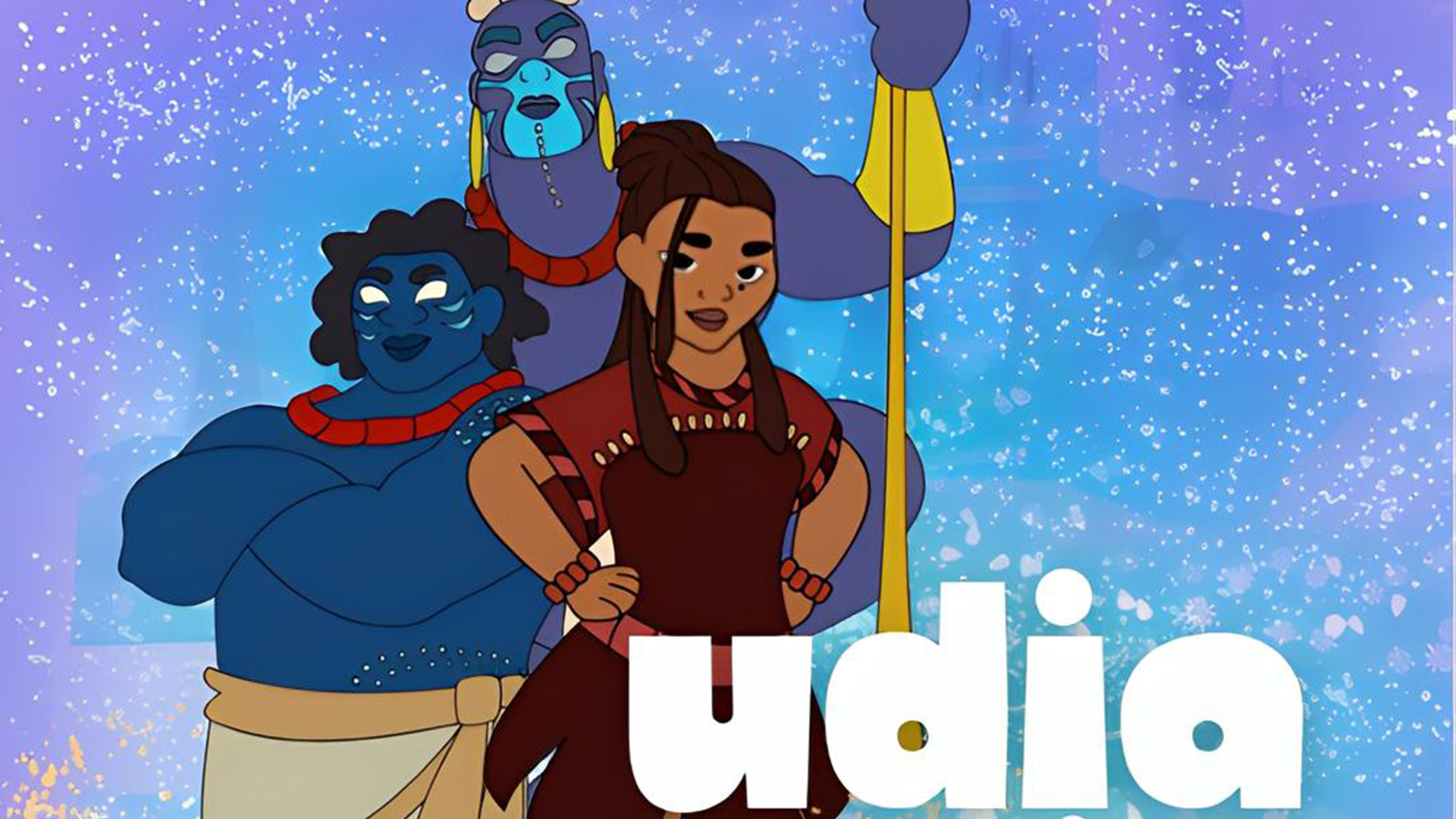
First, and perhaps most significant, is the confidence boost. “It’s incredibly inspiring. Seeing projects like Kizazi Moto or Supa Team 4 succeed creates a powerful sense of possibility and proves that our stories have a place on the world stage. The biggest change is in the mindset; it fuels our ambition,” says Lydia Ndanu, known professionally as Poppihin, a Kenyan native who is creating an animated fantasy film called The Ebony Witch with a studio based in Los Angeles.
Then, there are the tangible opportunities being created. “People are beginning to see that, as Africans, we have a wealth of stories that are universal. I do believe this recognition has allowed us to show that we have the skill and talent to produce high-end productions at an international level,” says Lola Aikins, an independent 2D animator making a short film about a star athlete struggling with debilitating grief, titled Naledi.
“The global spotlight on African animation is opening doors and creating more curiosity about unique stories from this part of the world. Right now, audiences and film festivals are seeking out different perspectives and cultures, which gives emerging animators like ourselves a chance to be seen and taken seriously on an international level,” explains Khaled who (along with co-creator Rana Saleh) is creating the promising Ana Fein W Geit Menein, an animated short about a Pharaoh accidentally sending himself forward in time to modern day Egypt.
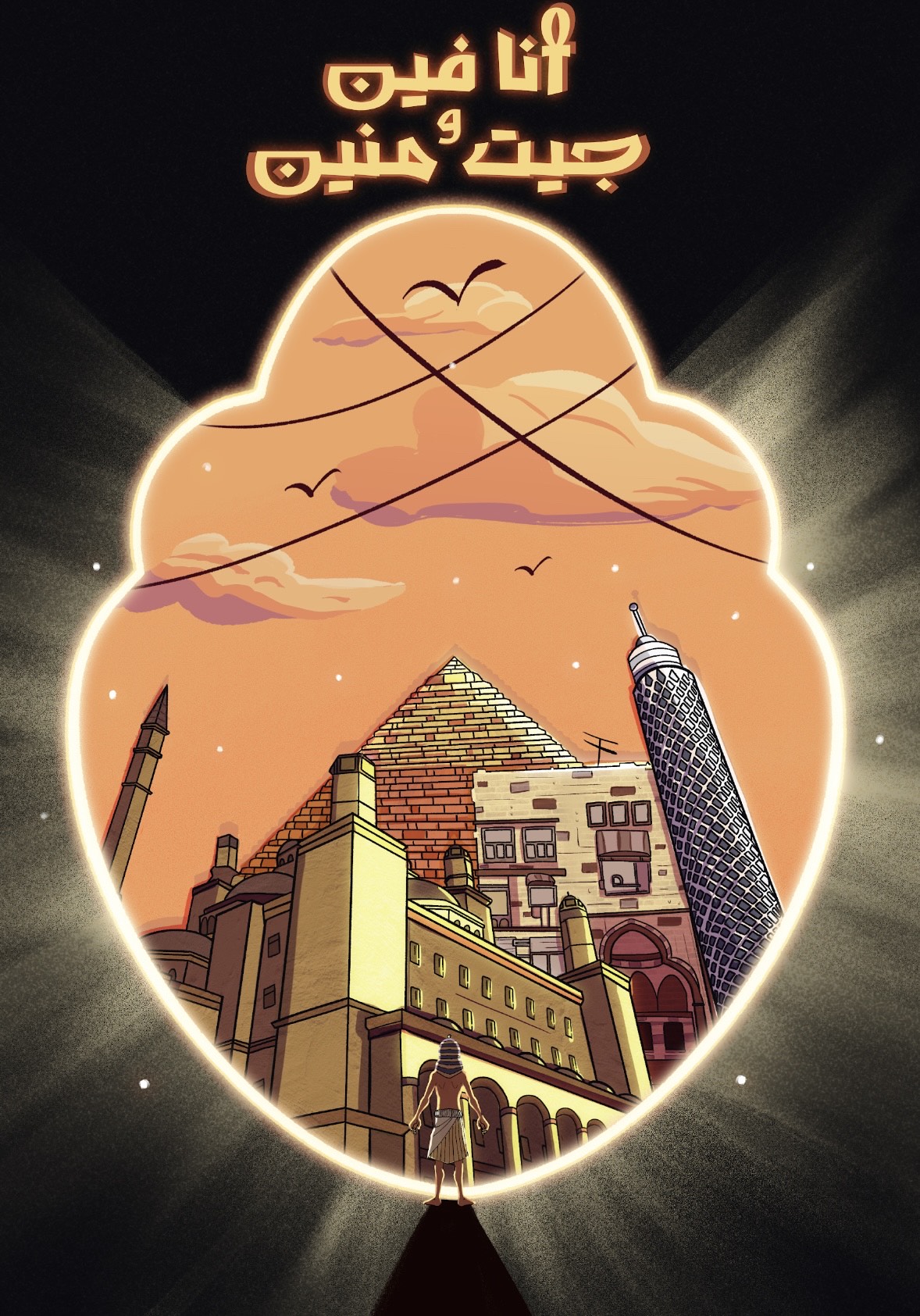
There is also the funding perspective. “I think there is more opportunity to pitch our projects at internationals,” Aikins shares, although she admits that attaining the funding to complete those projects to the desired quality is still a challenge. Ndanu agrees. “On a practical level, honestly, not much has changed. The opportunities and infrastructure haven’t trickled down significantly.”
And so, despite the improved confidence, it is not difficult for emerging animators to slip back into disillusionment. “In Nigeria, very few animation projects—especially full films or series—ever get completed. That reality makes it hard to stay encouraged,” Afor discloses. “Sometimes I look at people who have been in the industry for years without releasing a movie or series, and I wonder, what makes me different?”
What Are the Obstacles in the Way of Progress?
Unsurprisingly, the recurring answer to the challenges question is, without exception, funding. This is especially the case for emerging animators. If she had access to the kind of funding available to European or American projects, Aikins is sure she would have finished making Naledi in 2024. And to get the now successful Loop made, Qotb personally funded it, keeping the budget to around $150 by taking on about eighty-five percent of the work.
As Afor notes, many animators are self-funded or rely on small grants, and public or private investment tends to favour live-action projects. In her case, Udia has so far been self-funded through her personal savings. “It was not that investors rejected me—I simply did not know anyone to reach out to. There are no practical bodies in Nigeria dedicated to financing animation projects,” she remarks.
“Animation is capital and time-intensive. Without significant financial backing, most original ideas struggle to get past the concept stage. Grant funding and competitions are often the most accessible avenues for independent animators here to start their projects before attracting larger investors or studio partnerships,” Ndanu observes.
Till date, Aikins, Afor, and Khaled are yet to reach their funding goals for their current projects. For Naledi, Aikins has received public grants from government entities such as the South African National Film and Video Foundation, the Gauteng Film Commission, and the National Arts Council, as well as private funding from Itthynk Gaming. And Afor is now focused on seeking out partnerships, grants, and international opportunities that support African storytellers, while building visibility through platforms, networks, and festivals.
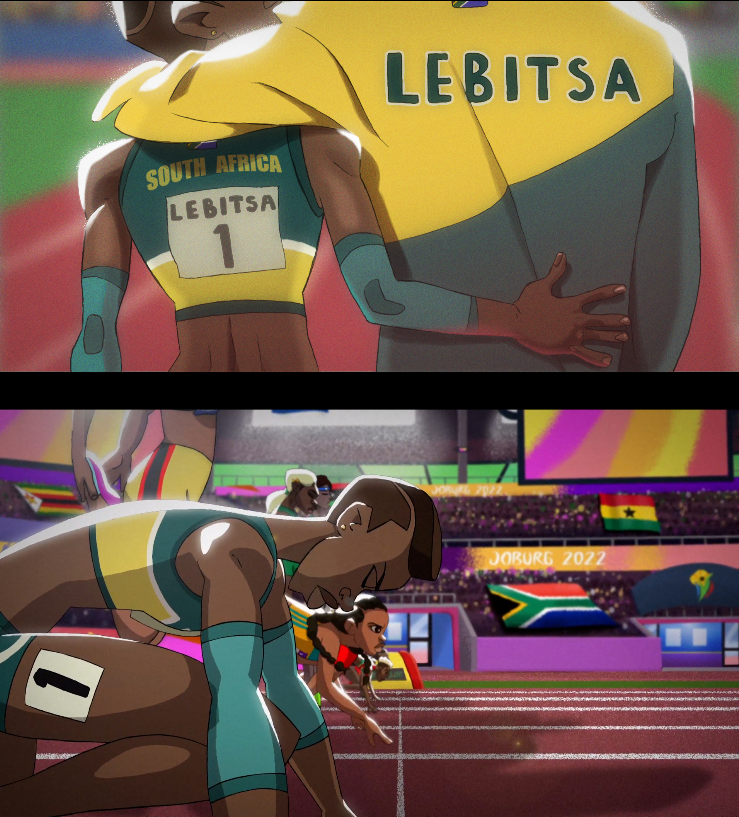
Emerging animators also have to rely on crowdfunding. Naledi is on its second Kickstarter campaign. For The Ebony Witch, Ndanu also turned to Kickstarter. And for Ana Fein W Geit Menein, Malak Khaled and Rana Saleh went the route of community support and promotion, sharing their concept and early animation work at events and conventions before launching an ongoing online funding campaign via Ko-Fi.
But the bigger animation studios are not immune to the funding challenges either. Forrest frames it as the consequence of an even bigger problem: distribution. “Without a clear path to market, no one invests in an animation project.” Khedr takes the same stance: “Yes, we are seeing increased investment in African animation, but it’s not nearly enough. Africa is the largest continent, with countless stories still untold. There is interest, but not at the level this continent deserves.
“Kizazi Moto was an important milestone for African animation, and for Giraffics, working on Stardust and First Totem Problems was a real boost. Still, the industry continues to face challenges with distribution and with the limited interest that many streaming services show toward African and Arab animation.
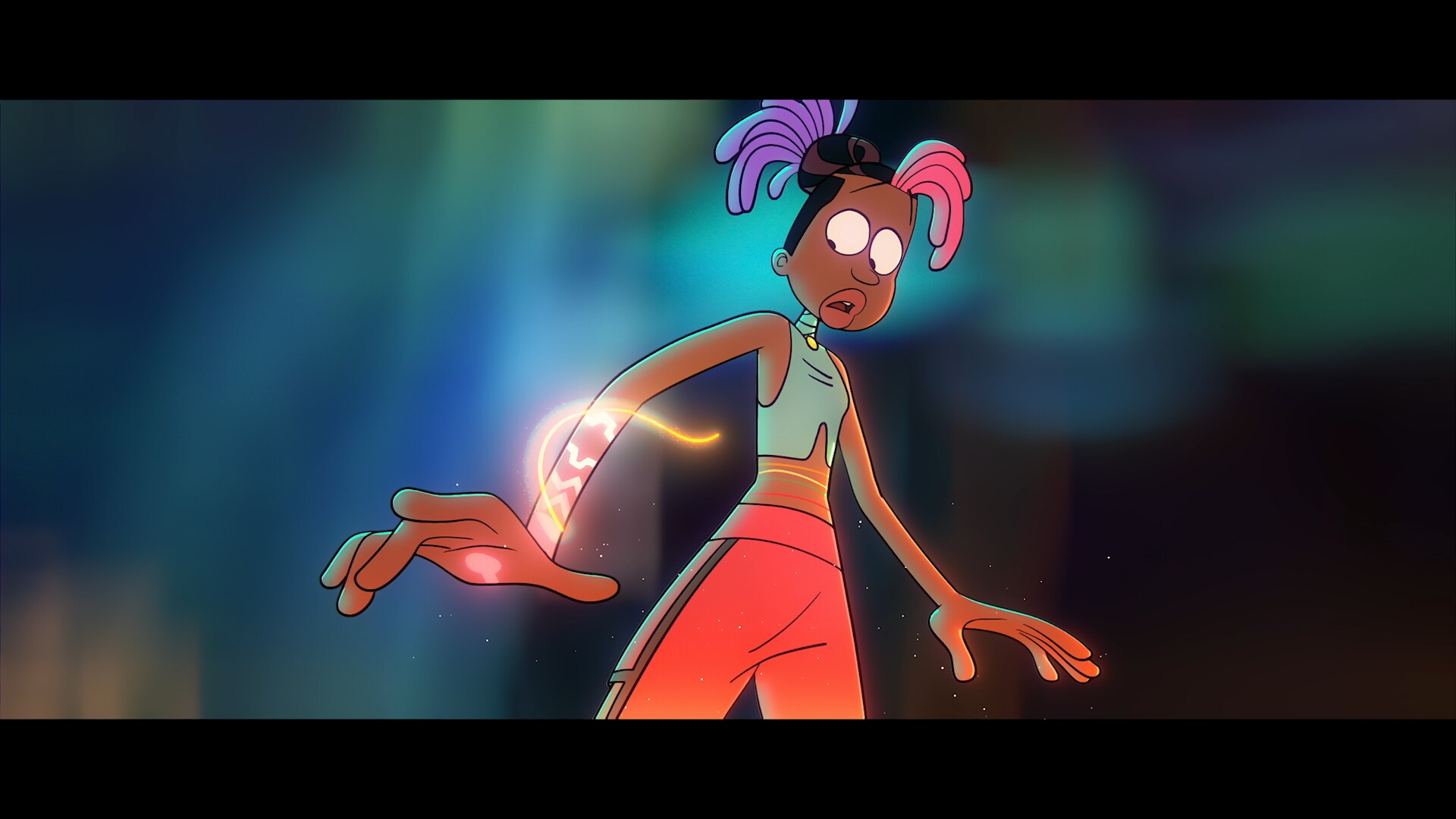
“As a result, many African studios survive by servicing, producing commercials, or doing work-for-hire, instead of building long-lasting IPs that could define the industry. For example, the cost of producing a single animated episode in the US is vastly higher than what African studios work with, yet we don’t have the distribution infrastructure to monetise even at our lower costs,” Khedr elaborates.
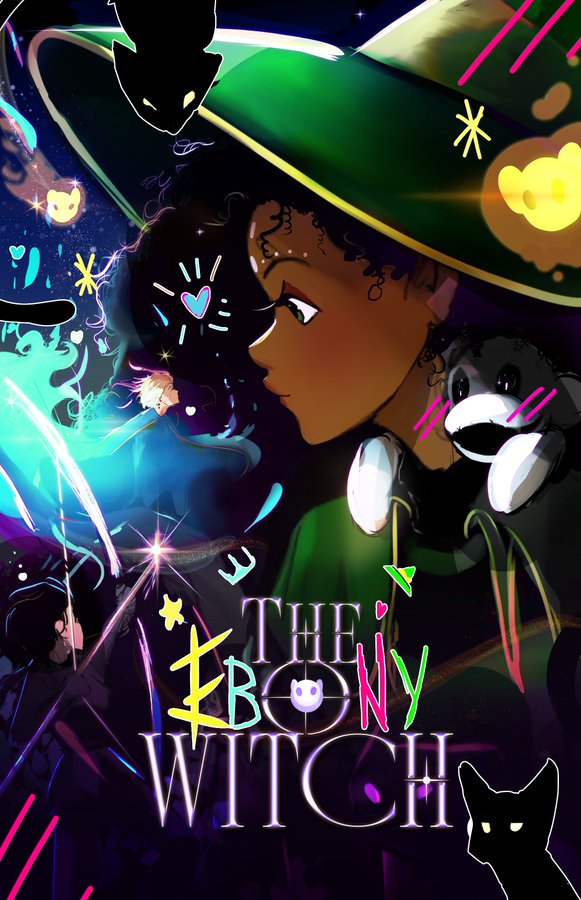
Access to opportunities and resources is also a significant barrier. Ndanu highlights the issue of limited access to advanced software and hardware. Olowofoyeku sheds some light: “Businesses like Adobe, Autodesk, Clip Studio Paint, Unity, or Epic Games provide tools that our artists and animators use, and those tools can be very expensive when you consider trying to pay for software at international exchange rates. When one wants to use certain tools and is required to pick the country the tool is being accessed from, one may have to use a VPN and pretend to be located in another country to gain access.”
Countries like Nigeria have a unique limitation when it comes to access. Nigeria has a reputation for internet fraud, so users in Nigeria are cut off from accessing several platforms. “As Kugali works with artists in many different African countries, we have faced great difficulties paying them because sometimes, payment platforms suddenly change their security measures, and we can no longer send money to a country (Nigeria, for example) using a particular platform that was working for us before. This sometimes leads to having to use a payment method that may take up to ten to twenty percent of the money you wish to transfer,” explains Hamid Ibrahim, the CEO of Kugali Media.
Additionally, there is the problem of the continent’s endemic lack of infrastructure. Olowofoyeku illustrates: “In Nigeria, we have frequent power cuts. If one needs to travel for an event, it might be difficult to get a visa.” Mukii has examples of her own, such as unstable electricity and transportation. “If I want to come to your studio, but it’s going to take me an hour and a half because it’s raining in Nairobi, am I coming or am I going to stay at my own studio and then go home? Stuff like that prevents collaboration. Our lack of reliable and safe public transport hinders our connectivity. We’re missing out socially and economically.”
One clear evidence of this disadvantage played out in the making of Enkai. “Capacity and security were challenges when I was working on Enkai,” Mukii tells Afrocritik. “I was very keen to find a studio on the continent to collaborate with, but being able to secure large teams of specifically trained artists in the specialised stages of the production pipeline was complicated. In addition, there were security requirements that some of the studios could not fulfil, and for this reason, Disney could not work with the studios.”
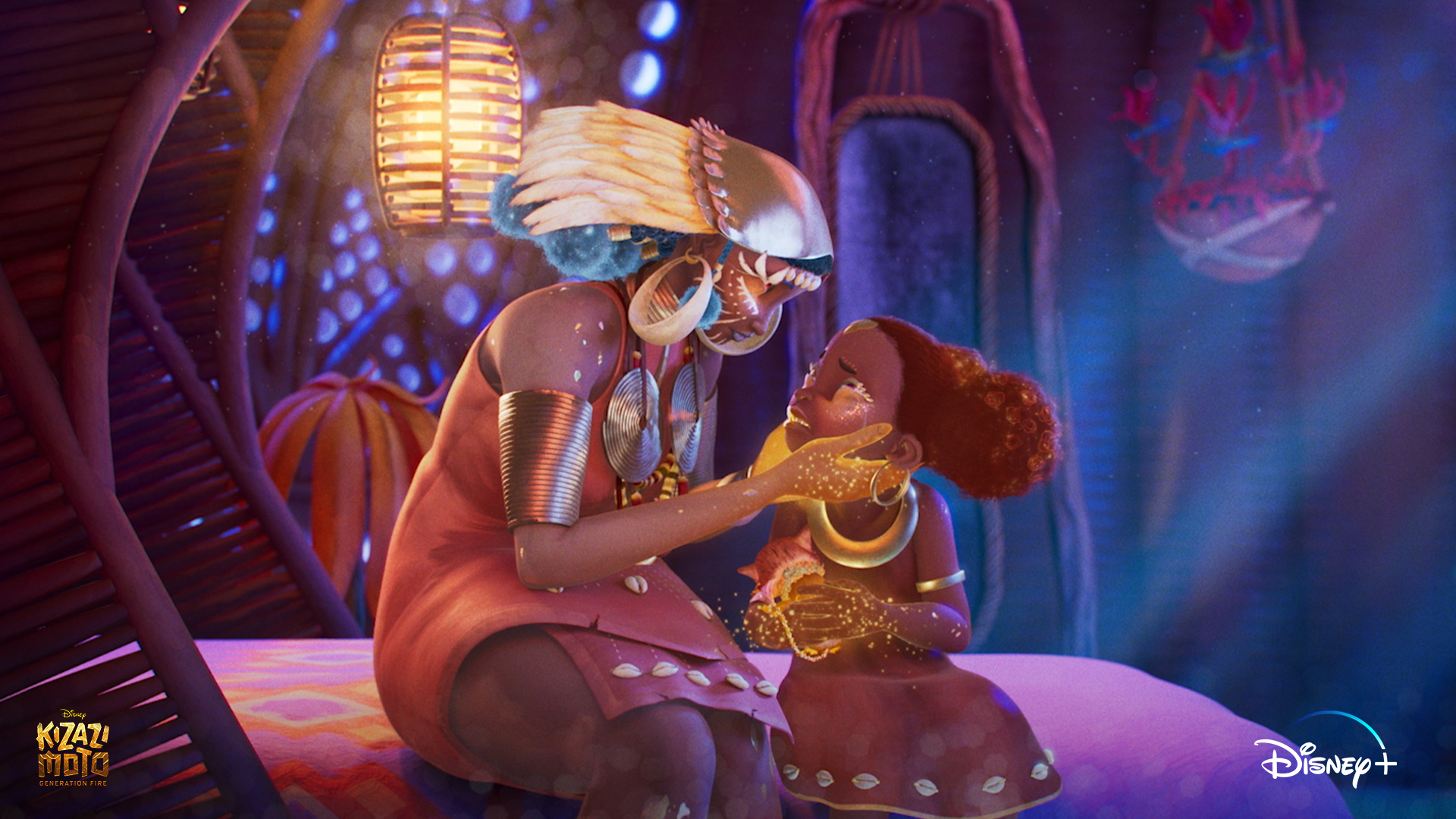
There is also the problem of capacity and institutional support. On one hand is the issue of quantity. As Khedr points out, there are many talented animators and artists across the region, but not yet enough to produce content at scale; nor is there enough content being made to provide sustainable opportunities for artists. “It’s a cycle,” he says. “Without projects, artists leave the industry, and without artists, studios struggle to produce ambitious projects.”
A related constraint is the lack of social proof that comes with a high number of successful projects. As Olowofoyeku explains, “Investors will not confidently fund animation projects, which are considerably more expensive than live action films and TV shows, when they don’t have examples of previous success stories in African animation to assure them that they will get their return on investment.
“Unfortunately, this is a chicken-and-egg situation because the only way to create social proof is for the sample size to be larger. If enough investors invest in African animation such that some of them make big profits, then there would be enough examples to look at to motivate future investment. This means someone has to take the risk first.”
On the other hand, there is a mentorship and training gap, which affects the quality of output. Aikins discusses two areas of concern in South Africa. First, there is a lack of artists at a mid-level skillset and, therefore, a need to upskill junior artists to reach a mid-level skillset and eventually a senior level. Secondly, while there are training institutions that provide good 3D animation training, there are currently no courses in South Africa that specialise in 2D animation at a degree or diploma level.
Kenya and Nigeria suffer a similar setback. As both Olowofoyeku and Ajuluchukwu note, most animators are self-taught, learning through YouTube and websites like Udemy and Teachable, and that slows progress. In Ndanu’s words, there is “a lack of large-scale, sustainable studios where animators can train and work consistently.”
“Studios are busy trying to survive, keep their companies alive, and pay their staff. While some people are willing to teach animation skills, it becomes much harder to find guidance when you want to move into producing. There simply are not enough people ahead of us to provide that roadmap,” Afor asserts.
“[Where] the training exists, the support is mostly limited to technical skills. There is not much structured guidance that helps animators transition from simply learning to actually producing and sustaining projects,” she adds.
Egypt appears to have more institutional support and training opportunities. For instance, Qotb mentions that there is an animation department at the High Cinema Institute, along with many animation schools, and the Egyptian animation community is also very supportive.
But the existing opportunities are still insufficient. While appreciating that progress has been made, Khaled believes there is still a need for a stronger support system for emerging animators and greater awareness of animation as a career path. “Many people in Egypt and across the MENA region still don’t fully understand how animation works or the variety of roles within the field.”
How Can These Hurdles Be Surmounted?
The African animation industry has such great potential, but the gaps need to be bridged. One particularly interesting recommendation, especially with respect to funding, is for animators to take advantage of technology, especially in this era of artificial intelligence.
“I think part of the solution is to embrace technology that makes the creation of a project less expensive, without sacrificing quality,” Forrest volunteers. “It’s inevitable that AI will begin to play a large role in creators making their own first short films without needing to raise huge amounts of funding, allowing easier identification of the next generation of writers and directors who will then be able to win bigger budget projects.”
But considering the challenges that technology comes with for Africans, such as payment issues, it is important that service providers create their products with Africa in mind. Olowofoyeku offers a suggestion, at least for access to those products. “Having localised pricing or some form of special access or training for these software platforms and tools is very useful to us.”
On the capacity end, investing in people is a recurring theme. Ajuluchukwu and Olowofoyeku insist that governments, especially relevant government departments like art and culture ministries, must step in and treat the industry as part of the creative economy, and that higher institutions must offer animation-related courses.
“We need long-term investment in people, not just projects. Once we build that foundation, the talent already here will flourish,” Ajuluchukwu says. “Young artists need access to grants and residency opportunities, so that they can pull and twist the animated medium, and form their own unique visual and storytelling language,” Mukii adds.
Training stands out as particularly important to the younger animators. Ndanu suggests that establishing animation studios that can serve as both workplaces and training grounds would make a difference. Also, since the most impactful training tends to happen through workshops and incubators run by organisations like Creation Africa and Alliance Française, she proposes that there should be more industry-led training programs that focus on practical, production-ready skills.
Efforts are already being made in that regard. As Khaled notes, Samaka Studio, one of Egypt’s biggest studios, organises workshops and training programmes. Afor’s entry into the Nigerian animation industry began with an internship at Smids Animation, before a more formal program hosted by Basement Academy. And Aikins is, herself, a trainer at Tshimologong Precinct’s Mollo Animation Academy, South Africa, which runs a twelve-month 2D animation internship programme to get graduates and self-taught artists to a level where they can be industry ready.
Investing in people also means creating and joining communities for animators, as well as collaborating, within countries, across the continent, and globally—an approach that could help ameliorate the problems of funding and capacity—provided that, as Mukii stresses, these groups are set up as safe spaces for everyone to participate, and the partnerships entered into are such that allow for artistic freedom.
“In a young industry like the African animation industry, all partnerships are valuable,” Forrest advises. “The industry is too small for everyone to be learning all the hard lessons alone. The best partnerships are the ones where there is a high level of mutual trust, across creation, production and distribution.”
Of course, international partnerships make an impact. “One that I’ve seen that has been particularly helpful is whenever the arts and culture ministries of more developed nations get involved with our own arts and culture community,” Olowofoyeku notes. Such involvement typically provides African studios and artists with opportunities to attend industry events in different countries, opening the door to business connections and exposure for these African studios.
However, Khedr places more focus on regional investments and intra-continental collaborations: “Regional partnerships are, and should be, the future of animation in this region. African and MENA studios need to join forces to create and distribute animation together. Our experience collaborating on Kizazi Moto showed how a local-global partnership can empower regional talent, but I believe the Global South should also unite to support one another.
“Imagine Egyptian studios working with Nigerian or Kenyan, Tunisian or Moroccan counterparts, pooling resources and knowledge to develop projects that reflect our cultures. This is not the job of one studio; it’s about networks of partnerships that allow the industry to grow sustainably. As well as creating content for us, citizens of the continent.”
Giraffics is already on the path of looking inward rather than just outward. “We’re working with regional brands and institutions that are open to funding animated content, especially when it connects with culture, education, or heritage. This way, we can create IP step by step without waiting for a Western green light,” Khedr says.
For Ajuluchukwu, the partnerships that matter most are those that respect Africa not as a resource, but as a collaborator. “For Vortex, that means working with people who understand that African IP has global value and must be nurtured, not exploited. It’s about co-creating pathways that allow us to scale our pipelines, build capacity for our talent, and give our stories a stage without stripping them of their soul. Partnerships that see us as equals—that’s where the magic happens.”
An essential lesson that even the studios with international partnerships have taken is the need for local investments. After all, there is no guarantee that international investments will endure.
As Olowofoyeku puts it, “We are not yet getting any significant amount of investment from them, and I don’t think we should rely on them for any significant amount of investment. I would love it if African billionaires would invest in the African animation industry. Charity begins at home. If African banks, VCs, and angel investors would just put some money into funding local studios so that we have the resources we need to expand and scale.”
How Exciting Is the Future of African Animation?
The challenges are hectic, but for Khedr, they are also opportunities, and this is what he finds most exciting about the future of African animation. “If I were a studio in the US or Europe, I would be competing in a crowded market. Here, every step forward creates ripples across the industry. That’s incredibly motivating.”
The sheer scope of stories that African animators can tap from is another cause for excitement. “It’s a very blue sea experience in that there are not many stories that have come out of Africa to the global audience. Other continents have already explored their stories and people usually want something new. There’s a level of fatigue for the stories that have been explored many times. This puts us in a unique position,” says Ibrahim.
“The same way anime, which simply means ‘animation’ in Japanese, made a big splash globally because it was a different experience from the Western stories, African stories can bring a flavour that the world hasn’t seen yet. It’s not just at a continental level. There are thousands of tribes, and if you look at South Africa, you look at Egypt, you look at East Africa and West Africa, all the different areas have many tribes that are very different from each other, and this leads to many stories and fantasies that are different and haven’t been seen before on the global stage,” Ibrahim adds.
But beyond the cultural and commercial opportunities to be created, sentiments around identity, representation and reshaping of perspectives are universal. “We have the opportunity to influence perceptions of the continent away from gloomy news media stereotypes towards demonstrating that Africa is a vibrant, creative and resourceful force with incredible stories to tell,” says Forrest, who considers animation to be a wonderful medium for bringing a specific culture, including storytelling, design, architecture, music, acting, and fashion, to an international audience in a way that is globally accessible.
“For too long, our stories have been told by others. Now, we have the chance to tell them ourselves, to create our own representation rather than asking for it. And the real excitement is imagining that ten or twenty years from now, young Africans will grow up watching heroes and worlds that look and feel like their own. That’s not just entertainment, that’s culture, identity, and pride,” adds Khedr.
It is the same thing that Mukii finds most exciting, especially the capacity to meaningfully include women and the Global South in stories. “We can really change how people see themselves through animation and in filmmaking in general,” she says.
Ajuluchukwu concurs. “We’re not just creating entertainment; we’re crafting new mythologies, rewriting narratives, and reshaping how the world perceives Africa—and how Africa perceives itself. The future of African animation is transformational. It’s the chance to take our cultural memory, our spirituality, our dreams, and turn them into universes that inspire generations.”
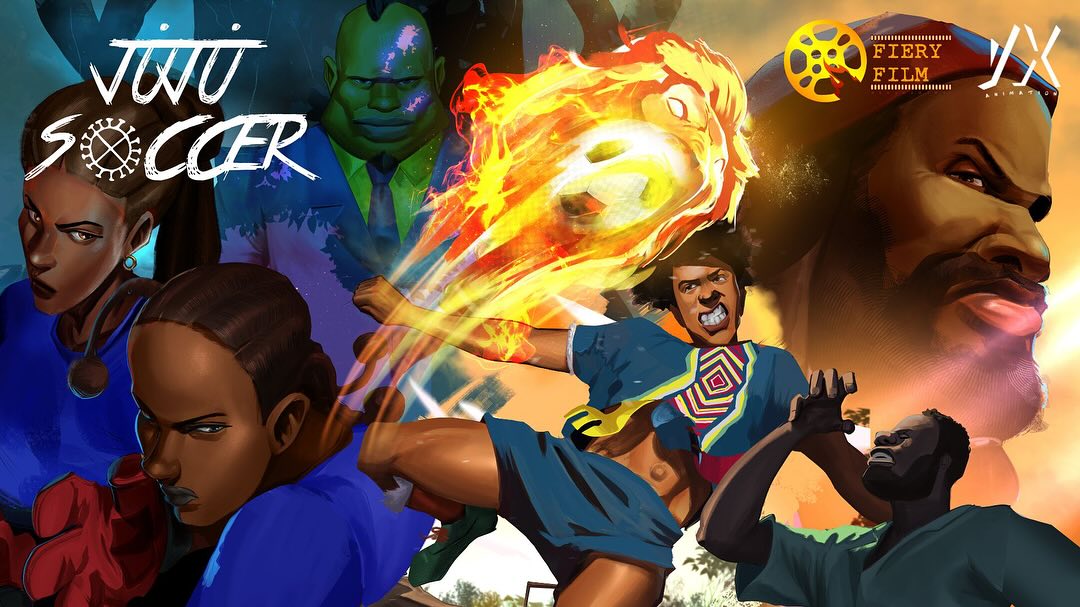
On the subject of universes, C.J. Obasi intends to make more animation projects, with lofty plans for an entire Fiery Universe. And for Joel ‘Kachi Benson, his new documentary project is just the beginning of exploring animation. “I see animation not as a departure from documentary or live action, but as an expansion—a new way to approach truth. I don’t yet know where it will lead, but I’m certain it’s a space I’ll keep returning to.”
The takeaway: Africa is sitting on a gold mine that it is yet to fully wake up to. Its animation industry is still navigating significant gaps in funding, distribution, capacity, and infrastructure. But each project, collaboration, and creative risk taken by African animators closes that gap a little more.
Across the continent, creators are using limited resources to produce standard works while remaining true to their stories. The potentials are boundless. It seems evident that the future of African animation is not only in catching up with the world, but also in reshaping how the world sees Africa, and how Africa sees itself.
Vivian Nneka Nwajiaku is a writer, film critic, TV lover, and occasional storyteller writing from Lagos. She has a master’s degree in law but spends most of her time watching, reading about and discussing films and TV shows. She’s particularly concerned about what art has to say about society’s relationship with women. Connect with her on X @Nneka_Viv


